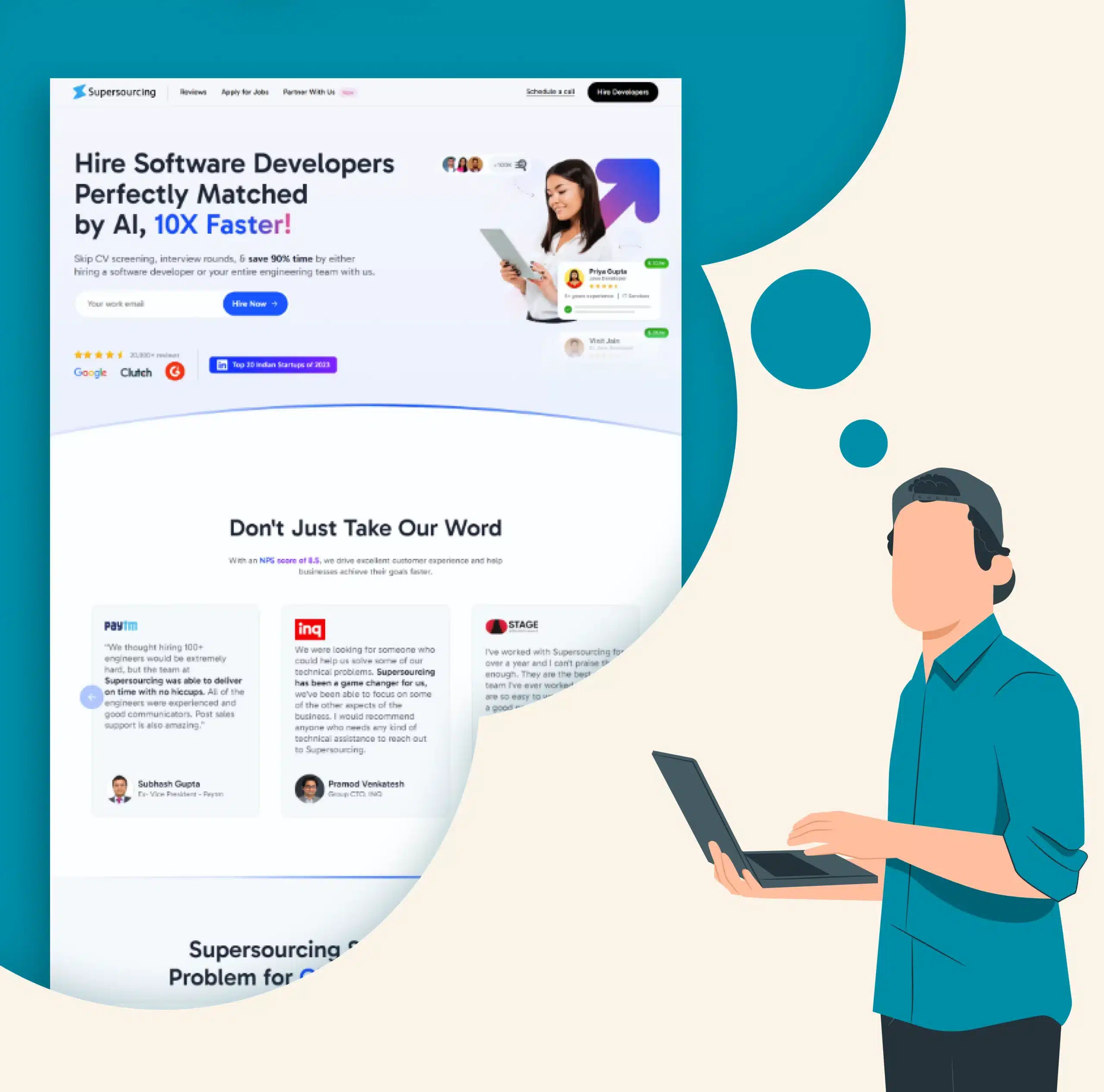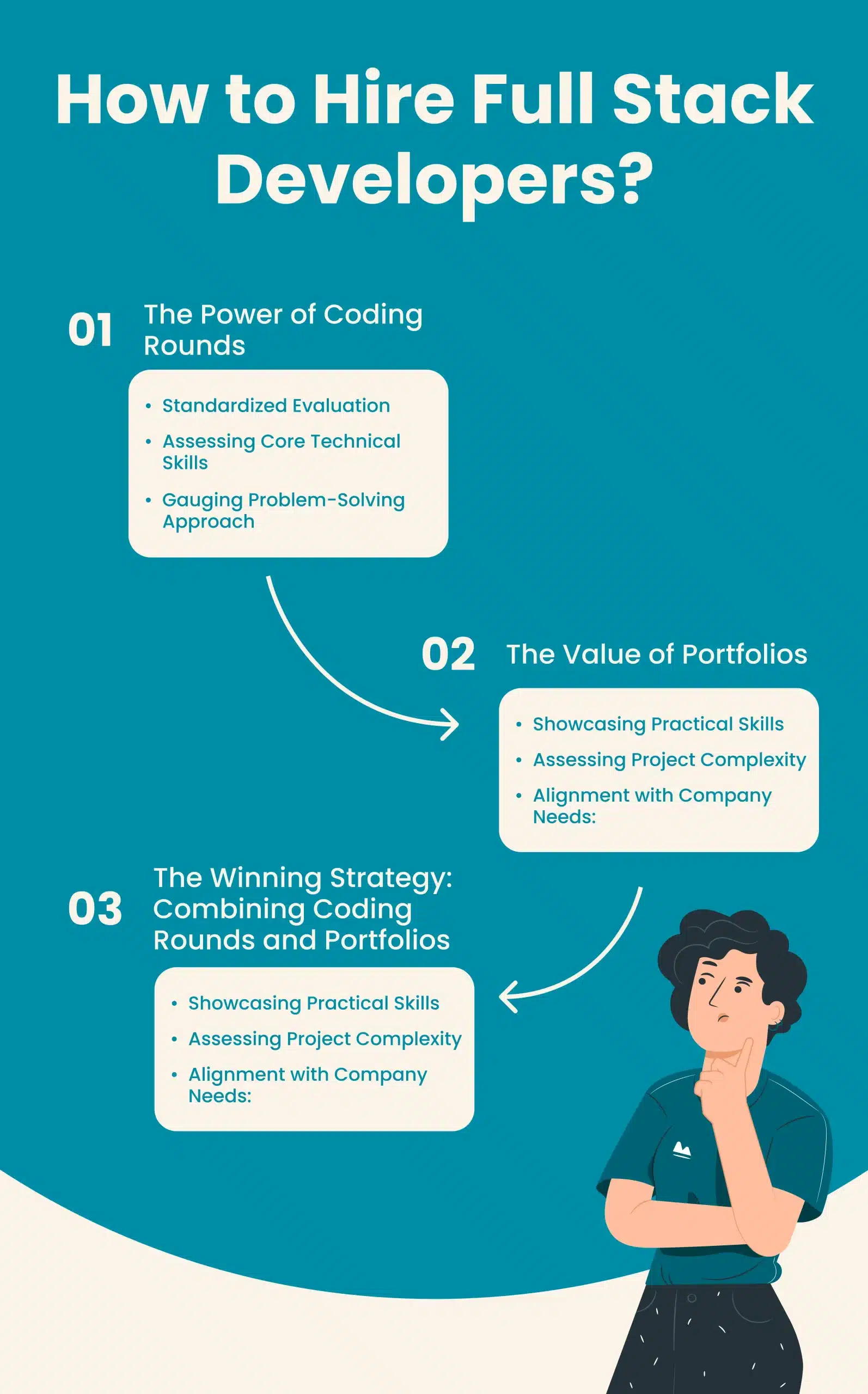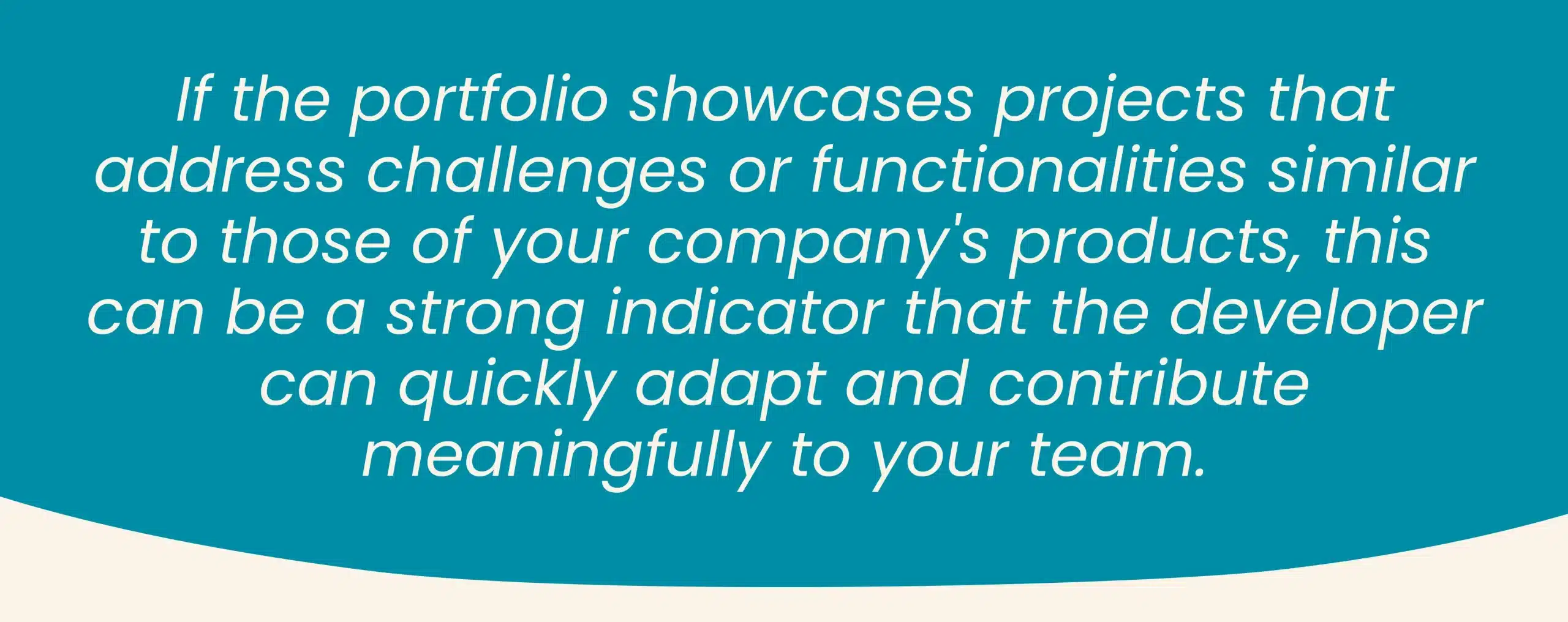Table of content
The traditional approach to hiring full stack developers has been to rely heavily on coding challenges, a method that tests their problem-solving abilities under pressure. While this approach is still prevalent, we want to highlight the equally valuable asset of a strong portfolio, showcasing real-world projects in today’s tech recruitment landscape.
However, the question remains: which method is better? This blog post will explore leveraging coding rounds and portfolios to create a more comprehensive evaluation process and help you understand how to hire full stack developers. We’ll explore how to leverage them effectively, helping you make a more precise and efficient recruitment process that will enable you to measure quality of hire.
How to Hire Full Stack Developers (In Just 7 Days)?
Searching for the best full stack developers, especially those with industry expertise, can seem daunting. Rest assured, Supersourcing is here to provide you with the best tech talent, pre-vetted on extensive performance metrics, and we assure you, you will do it in just 7 days.
Let’s take a closer look at why we are the best hiring partners for you!
- We go beyond basic job boards: Forget wading through endless resumes filled with generic qualifications. Supersourcing boasts a carefully curated network of the top 1% software developers across various industries.
- Industry Expertise Matters: We understand that a one-size-fits-all approach only works when hiring full stack developers. Our network is brimming with developers with specialized knowledge in your industry, ensuring you find someone who can hit the ground running and contribute meaningfully from day one.
- Speed and Efficiency: Time is of the essence, and traditional hiring processes can be painfully slow. With Supersourcing, you can streamline your search and find the perfect candidate in just 7 days.
Stop stressing about the full stack developer hiring marathon. Contact us today and let Supersourcing help you find profiles of the best tech talents.
How to Hire Full Stack Developers: Code vs. Portfolio? Solved!
Once you have received a highly qualified developer’s profile from Supersourcing, you only need to take their skill test to ensure that the developer’s technical skills align with your project requirements.
Traditionally, companies have relied on coding rounds—timed tests where candidates solve programming challenges—to assess technical proficiency. However, a strong portfolio showcasing real-world projects can be equally valuable today.
So, how can you leverage both approaches to create a more well-rounded evaluation process? Here’s a breakdown to help you decide:
The Power of Coding Rounds:
- Standardized Evaluation: Coding rounds provide a consistent platform to compare candidates’ problem-solving skills under pressure. This is particularly helpful when evaluating a large pool of applicants with varying experience levels.
- Assessing Core Technical Skills: Well-designed coding challenges can pinpoint a candidate’s grasp of specific programming languages, algorithms, and data structures. This ensures they possess the technical foundation to excel in your tech stack.
- Gauging Problem-Solving Approach: Observe how candidates approach challenges. Do they break down the problem logically? Can they think creatively and develop efficient solutions? These insights can reveal a candidate’s thought process and potential fit within your team’s dynamic.
The Value of Portfolios:
- Showcasing Practical Skills: Portfolios are a window into a candidate’s past projects. They allow you to see the developer’s ability to translate theoretical knowledge into practical applications.
- Assessing Project Complexity: By reviewing the types of projects in a portfolio, you can gauge a candidate’s experience level and ability to handle complex tasks.
- Alignment with Company Needs: Look for projects that align with your company’s technologies and goals. This can give you valuable insight into a candidate’s suitability for the specific role and their potential contributions to your team.
The Winning Strategy: Combining Coding Rounds and Portfolios
Here’s the key takeaway: don’t view coding rounds and portfolios as competing forces! Use them in pairs to create a comprehensive evaluation process.
- Start with Coding Rounds: Utilize coding challenges as an initial screening tool. This helps narrow down a large applicant pool and identify candidates with the core technical skills you require.
- Dive Deeper with Portfolios: Once you have a shortlist of promising candidates, delve into their portfolios. This allows you to assess their practical experience, project complexity, and alignment with your company’s needs.
By strategically combining these two approaches, you’ll better understand each candidate’s capabilities and make more informed hiring decisions. This ultimately leads to finding the perfect full stack developer with the technical foundation and real-world experience to contribute to your company’s success.
What to Look for in a Full Stack Developer’s Portfolio?
A strong portfolio is a developer’s chance to shine, showcasing their technical skills and real-world experience. So, when evaluating portfolios during your full-stack developer hiring process, what key elements should you look for?
Project’s Diversity: Look for a portfolio demonstrating various projects and showcasing the developer’s ability to handle diverse challenges. Ideally, the projects should represent personal and professional work.
Project Complexity: Pay attention to the project’s complexity. Are they simple static websites, or do they involve dynamic features, database integration, and user authentication? The level of complexity can indicate the developer’s experience and skill set.
Clear Description: A well-structured portfolio will include clear and concise descriptions of each project. These descriptions should explain the project’s purpose, the technologies used, and the developer’s specific contributions.
Code Samples: Some developers might also include code snippets within their portfolio. This lets you get a glimpse of their coding style, attention to detail, and potential areas of expertise (e.g., front-end frameworks, back-end languages).
Relevance to Your Requirements: While variety is significant, prioritize projects that demonstrate familiarity with technologies relevant to your company’s tech stack. Does the developer have experience working with the programming languages, frameworks, and databases you use?
Focus on UI/UX: An eye for design and user experience (UX) can be a valuable asset for full stack developers involved in front-end and back-end development. Look for projects that showcase a clean and user-friendly interface, well-organized code structure, and an understanding of responsive design principles (ensuring websites adapt seamlessly across different devices).
Note: Use automated resume screening tools to save time, increase efficiency, and improve candidate experience. They eliminate human bias and provide an objective evaluation of resumes, allowing you to focus on the most qualified candidates while reducing recruitment costs.
Wrapping Up!
In conclusion, finding the perfect full-stack developer can be challenging, but by leveraging a combination of coding rounds and portfolios, you can create a more comprehensive evaluation process. Don’t view these two approaches as competing forces—instead, use them in pairs to assess each candidate’s technical skills and practical experience. By doing so, you’ll be able to make more informed hiring decisions and find the right person who can contribute meaningfully to your team from day one.
With Supersourcing, you can streamline your search for full stack developers and find the perfect candidate in just seven days. So, stop stressing about the hiring process, and let us help you find the top tech talent your team needs to succeed.
Happy Hiring!



